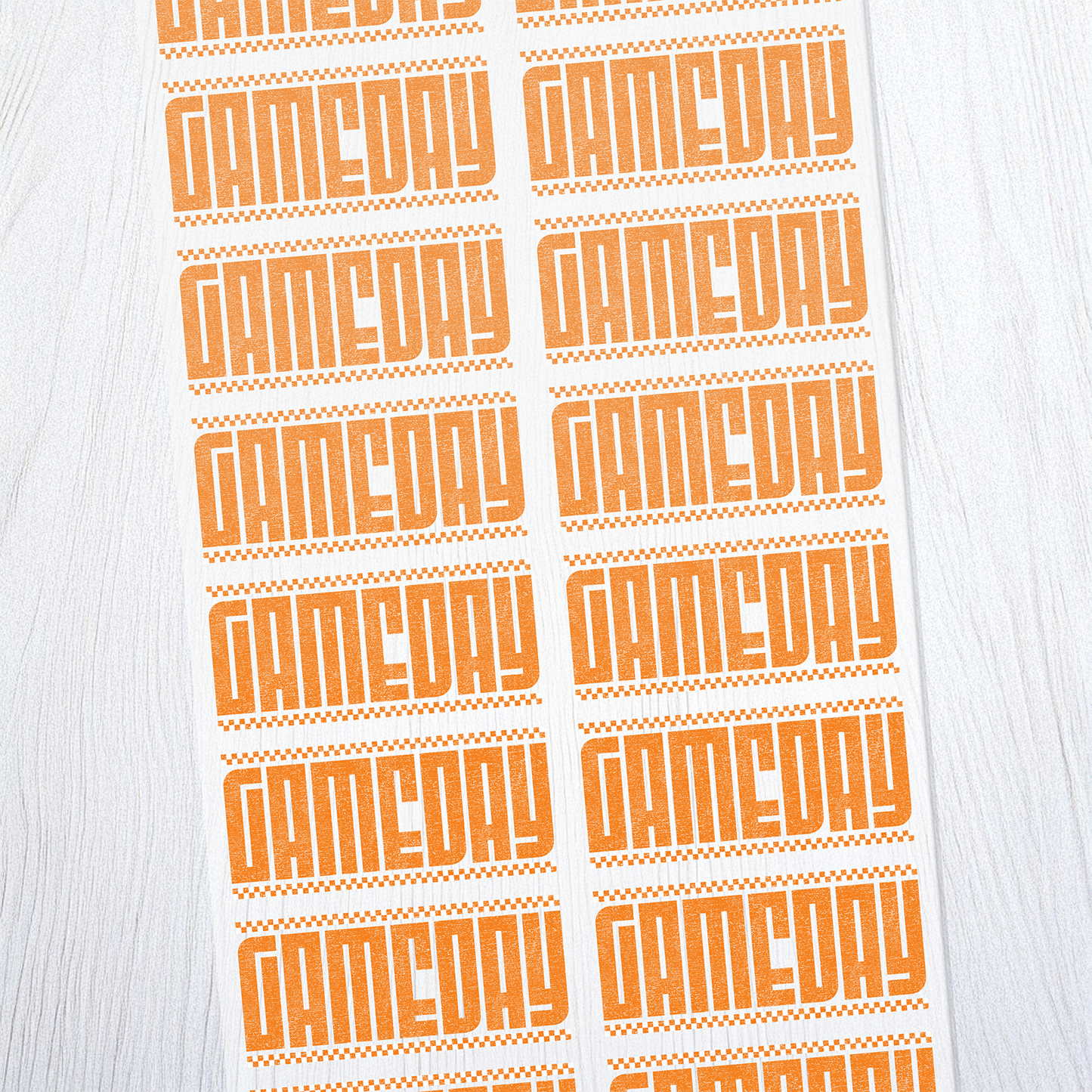
Perfect Press, Lasting Prints: Your DTF Transfer Application and Care Guide
Share
You’ve mastered the gang sheet, you've uploaded your amazing design, and now your professional, ready-to-press Direct-to-Film (DTF) transfers have arrived. You are just one step away from creating a high-quality, durable, and soft-feel piece of custom apparel!
Applying DTF transfers is simple, fast, and delivers a professional finish every time—but only if you use a commercial heat press and follow the simple steps. As noted in our FAQ, ironing or using a Cricut EasyPress will not work! A commercial press provides the consistent, even pressure and temperature required for a complete, lasting bond.
Here is your complete guide to pressing your Meltdown Transfers perfectly and ensuring your customers' apparel lasts for years.
Step 1: Prep Your Heat Press & Garment
Getting the right temperature and pressure is the key to activating the adhesive and ensuring a lasting bond.
1. The Right Equipment
Commercial Heat Press: This is non-negotiable. It provides the consistent heat and even pressure required to cure the transfer to the fabric.
Meltdown Transfers: High-quality, ready-to-press DTF transfers.
Parchment/Teflon Sheet: Essential for protecting your garment and the heat press platen during the final press.
2. Press Settings
Temperature: Set your heat press to 275∘F.
Pressure: Use Medium/High, even pressure. This firm pressure is crucial for a complete bond.
3. Pre-Press Your Garment
Use your heat press to pre-press the garment for 5–10 seconds. Why pre-press? This crucial step removes moisture and wrinkles, creating a perfectly flat surface for a long-lasting transfer.
Step 2: The Application Process
1. Position the Transfer
Carefully place your DTF transfer on the pre-pressed garment with the printed image facing down exactly where you want it. Use a ruler or laser alignment tool for precise placement. Pro Tip: For most adult shirts, the top of the design starts about 2–3 inches down from the neck seam.
2. The First Press (Adhesion)
Close the press for 10–15 seconds at 275∘F with Medium/High, even pressure. This initial press adheres the transfer to the fabric.
3. The Peel
Carefully and smoothly peel the transfer film away from the garment. Troubleshooting Tip: If any part of the design lifts, stop, lay the film back down, and press again for 5 seconds. This usually indicates you need more time or more pressure.
4. The Final Press (Setting)
Once the film is completely removed, discard it. Place a Teflon sheet or parchment paper over the design. Press a final time for 3–5 seconds with the same settings. Why the final press? This post-press step ensures the design is fully sealed, increasing its durability and washability, and gives the print the soft, professional finish your customers will love.
Step 3: Care Instructions for Lasting Quality
One of the greatest advantages of DTF is its incredible durability—it's designed to be resistant to cracking and peeling, and can outlast the garment itself. To ensure your customers get the most life out of their custom apparel, provide them with these simple care instructions.
Washing & Drying:
Wash Inside-Out: Turning the garment inside-out protects the transfer from abrasion during the wash cycle.
Cold Water Wash: Use a gentle cycle with cold water.
Tumble Dry Low or Hang Dry: High heat is the enemy of all apparel decoration. Avoid high-heat drying or, better yet, hang the garment to dry.
Avoid Bleach/Fabric Softener: These chemicals can degrade the transfer adhesive over time.
Ironing:
Do not iron directly on the transfer! If ironing is absolutely necessary, turn the garment inside-out first.
Follow these simple steps, and you'll consistently deliver high-quality, durable custom apparel that will keep your customers coming back for more!




